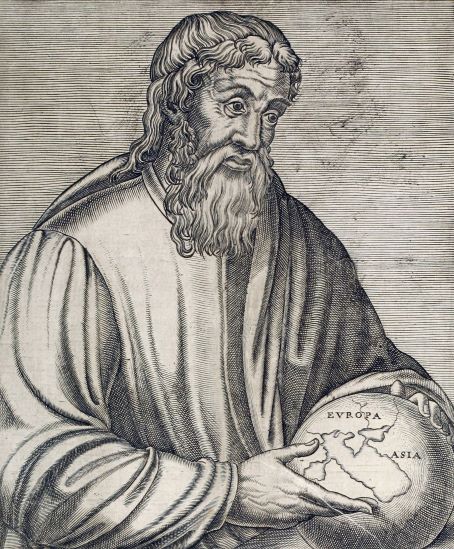The teaching of geography and cyberspace: The use of ICT in the school network of Altamira - Pará
DOI:
https://doi.org/10.53455/re.v4i.132Keywords:
Ensino de GeografiaAbstract
Context: The objective of this study is to analyze how teachers perceive ICTs and the use of virtual spaces for teaching. Specifically, to identify which virtual spaces geography teachers use for educational practice, as well as to understand whether teachers use cyberspace for their practice in the context of cyberculture, in addition to understanding how the teacher's relationship with virtual spaces on the internet (cyberspace) in the school environment in geography classes is being constituted, considering the implications of this relationship for the teaching and learning process of students. Methodology: The data were collected through the application of a virtual questionnaire to ten geography teachers from the public education network, from 6th to 9th grade of Elementary School, in the municipality of Altamira, Pará. The data collection analysis occurred through the teachers' responses to the virtual questionnaire. Considerations: The analysis of the results shows us that the availability and use of ICTs and cyberspace in the school environment, and access to the internet, are below their potential. It reinforces the conviction that it is necessary to develop actions that enable the introduction of ICTs in schools and the virtual environment in a pedagogical perspective, in order to create opportunities and learning experiences that favor the construction of knowledge for the student.
Downloads
References
Azevedo, H. L. (2010). O ciberespaço em uma reflexão geográfica (3ª ed.). Vértices. [Link](https://editoraessentia.iff.edu.br/index.php/vertices/article/view/1809-2667.20100026) DOI: https://doi.org/10.5935/1809-2667.20100026
Bourdieu, P. (2000). O poder simbólico (3ª ed.). Bertrand.
Barros, T., Teixeira, A. C. (2019). A educação geográfica e as novas tecnologias, movimentos e possibilidades. [Link](https://ocs.ige.unicamp.br/ojs/anais14enpeg/article/view/3102)
Carlos, A. F. A., & Vidal, J. W. (2010). A geografia na sala de aula (8ª ed.). Contexto.
Castells, M. (1999). A sociedade em rede. A era da informática: Economia, Sociedade e Cultura (1ª ed.). Paz e Terra.
Cavalcanti, L. S. (2008). Geografia, escola e construção de conhecimentos (13ª ed.). Papirus.
CETIC, B. (2021). Centro Regional de Estudos para o Desenvolvimento da Sociedade da Informação. TIC domicílios 2020. [Link](https://cetic.br/pt/tics/domicilios/2020/domicilios/A4/)
Lotthamer, K., Silva, J. B., & Zanatta, C. R. (2019). O uso das TIC no ensino de Geografia para a educação básica. [Link](https://www.researchgate.net/publication/337729373_O_uso_das_TIC_no_ensino_de_Geografia_para_a_educacao_basica)
IBGE. Instituto Brasileiro de Geografia e Estatística. (2022).
Pierre, L. (1999). Cibercultura (3ª ed.). 34. DOI: https://doi.org/10.1023/A:1004703504103
Lemos, A. (2004). A cibercultura. Tecnologia e vida social na cultura contemporânea (2ª ed.). Sulina.
André, M. E. D. A., & Lopes, M. L. (1986). Pesquisa em educação: abordagens qualitativas. EPU.
Oliveira, L. (da). (s.d.). TIC na Educação: A prática docente concernente ao uso das tecnologias. [Link](https://uab.ifsuldeminas.edu.br/pluginfile.php/15498/mod_forum/attachment/24084/TCC%20v.4.pdf)
Ribeiro, M. (2020). Metodologia aplicada na educação em tempos digitais educação digital, 14. [Link](http://www.gestaouniversitaria.com.br/artigos-cientificos/metodologia-aplicada-na-educacao-em-tempos-digitais-educacao-digital)
Santos, M. (2017). A natureza do espaço: Técnica e tempo, razão e emoção (4ª ed.). Universidade de São Paulo.
Santos, M. (2014). Espaço e método (5ª ed.). Universidade de São Paulo.
Santaella, L. (2010). Culturas e artes do pós-humano: Da cultura das mídias à cibercultura (4ª ed.). Paulus.
Downloads
Published
How to Cite
Issue
Section
License
Copyright (c) 2023 Taiane Costa, Daniel Sombra Soares

This work is licensed under a Creative Commons Attribution 4.0 International License.
The magazine follows the Creative Commons (CC BY) standard, which allows the remix, adaptation and creation of works derived from the original, even for commercial purposes. New works must mention the author(s) in the credits.













